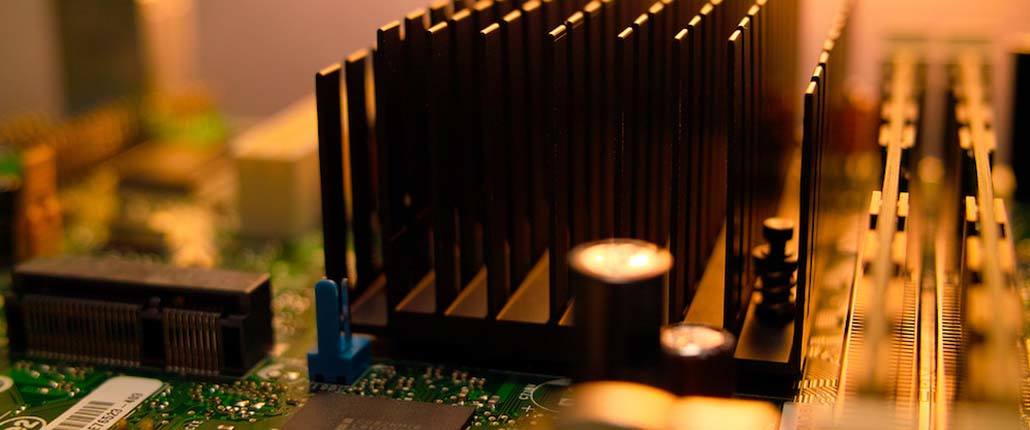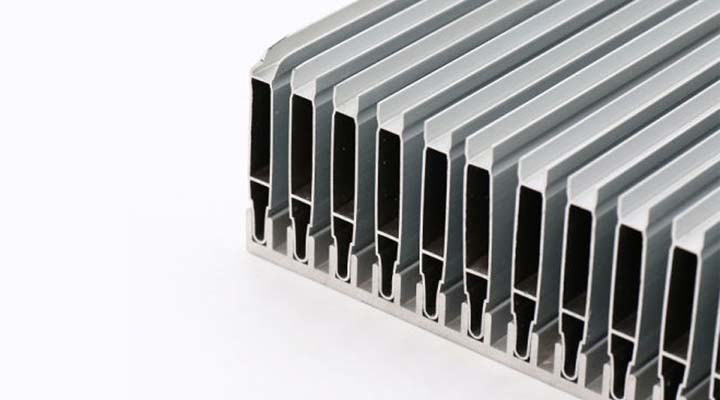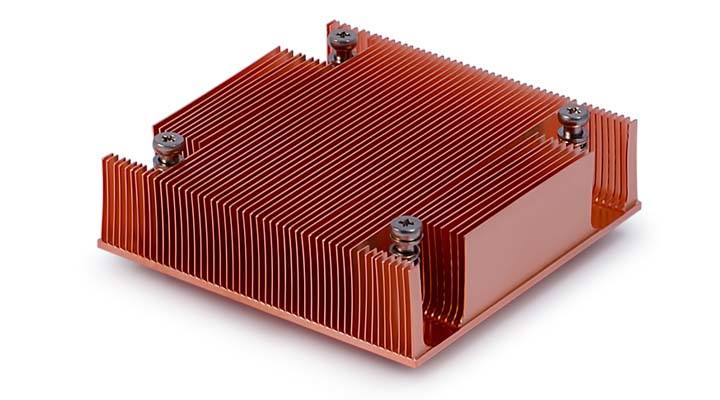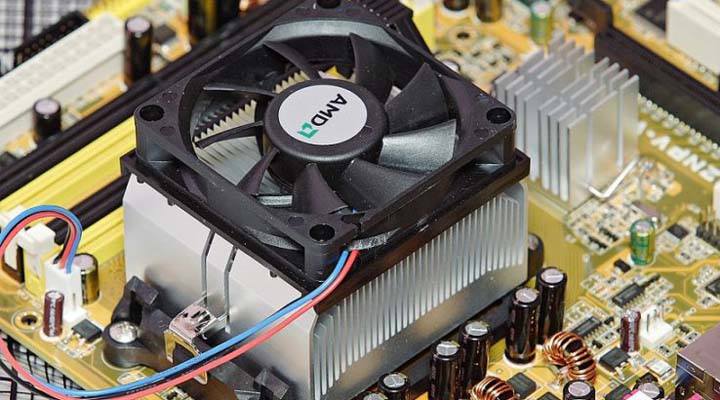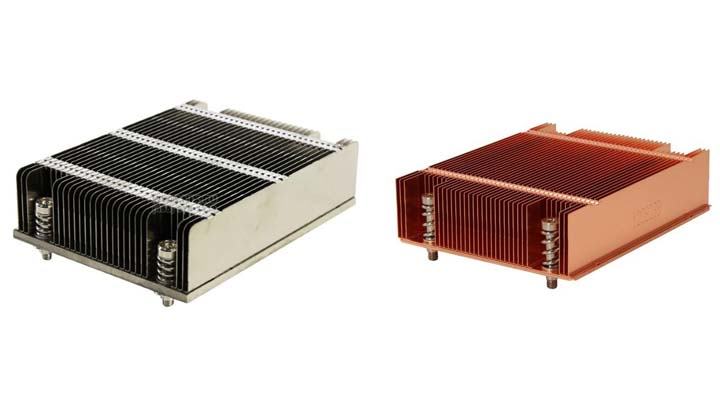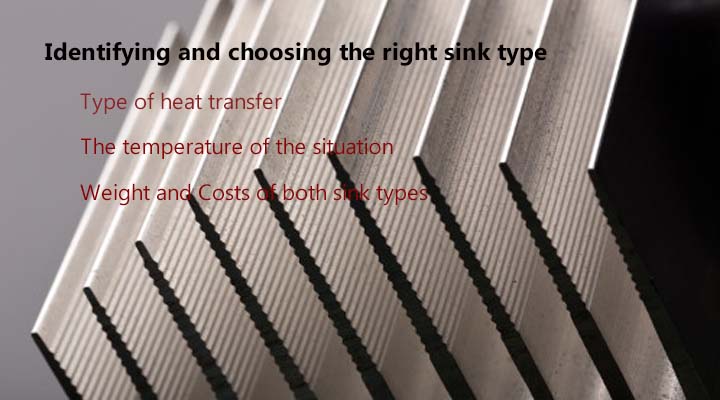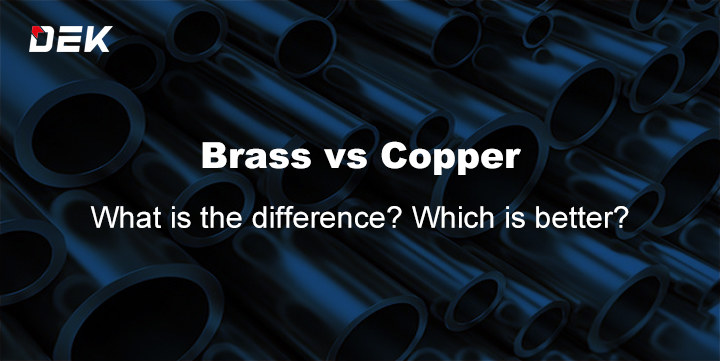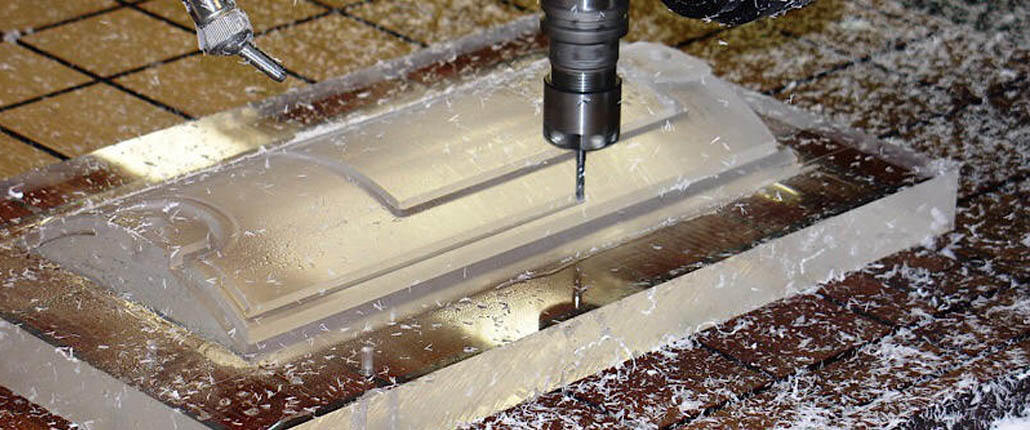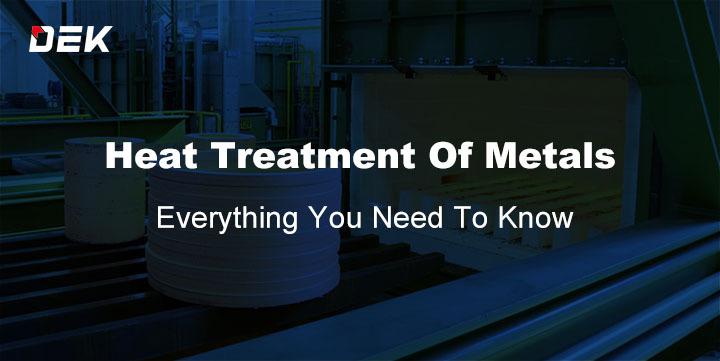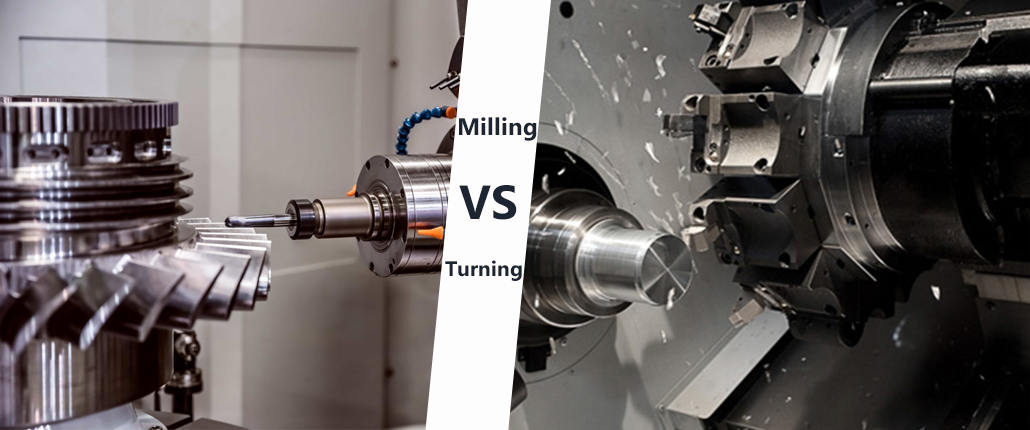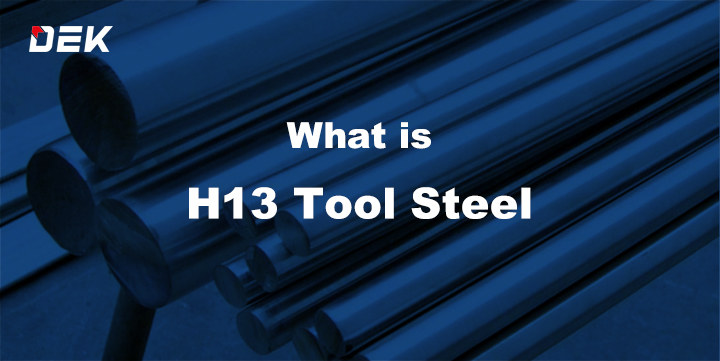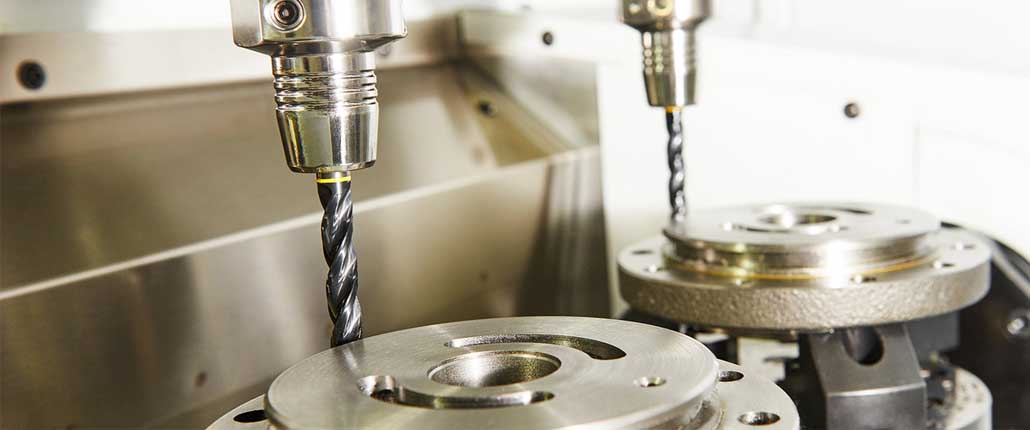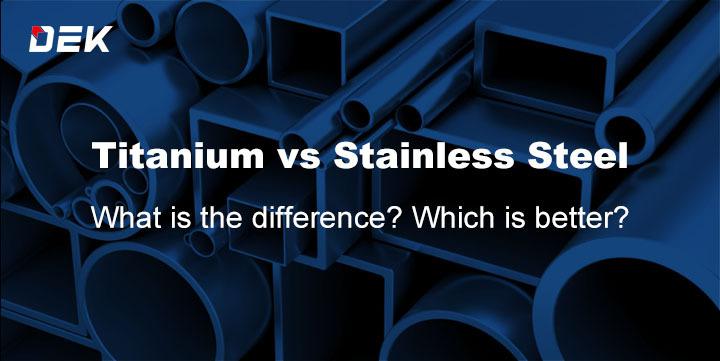Heat sinks are materials built for the effective regulation of the heat temperature of any electronic or mechanical device. They have a base that lies on the surface of the device’s chip while having extended “fins.” They serve as an “exchanger” that transmits the heat generated into a coolant or fluid medium. Heat sinks are also commonly found in computer hardware setup, which helps cool off your computer’s CPU, Chipsets, GPUs, and RAM.
This also enables your system to maximize performances without overheating, which causes lagging, and subsequently, fatal damage. This is achieved by moderating its temperature with enough air as possible. The most commonly used materials for heat sinks are aluminum and copper alloys.
Definition of Aluminum Heat Sinks
Aluminum heat sinks are mostly used due to their potent thermal conductivity, which is being measured at 235 W/m-K. They are used for pure thermal conductions, so they are one of the most widely applied metals on earth. They possess low density for machinery conduction while maintaining good strength in heat transition and device performance. Although its corrosion resistance is impressive, it is not as potent as the copper material. They are great for recycling too.
Definition of Copper Heat Sinks
On the other hand, copper heat sinks are applicable because they possess corrosion and antimicrobial resistance due to their effective thermal conductivity at over 400 W/m-K. Although they are not easily machined, they are still expensive and expansive, depending on their purity. This is why copper alloys are implemented for industrial lines like power plants, solar systems, and dams.
How they work
When your chip works, it heats up from intense usage. The work of the heat sink, while placed on it, helps distributed the heat emitted properly through the fins, keeping your chip at the right operational temperature.
When your chipset, GPU, or RAM is heating up, heat radiation and conduction are being assisted by the fluid flow, which takes the heat away, resulting in cooling. It is no news that overheating will destroy the whole function of an electronic, and this emphasizes the need for a good heat sink.
General use of heat sinks
To get the heat radiation in your device well-managed, it is important to use the heat sinks for functional and operational maximization. As I have mentioned earlier, a lower temperature will help your electronics yield excellent functionality while increasing their expected life. The performance of your heat sink is based on our velocity, fin design, surface treatment, and ultimately, choice of material.
Manufacturing types
Heat sinks involve many varieties of design constructions for computer and electric motherboards. Both aluminum and copper heat sinks come in these forms. There are:
- Extruded heat sinks
- Bonded heat sinks
- Forged heat sinks
- Stamped heat sinks
- CNC machining heat sinks
- Zipper fin heat sinks
Finning
There is a coolant fluid present in our electronics, and it is the work of your heat sink to dissipate the heat radiation flow through it. This is to keep your chipsets running on maximized performance without overheating or damage. Fin performance can also be measured with its thickness and height. When heat is being transferred to the fin, it combines with thermal resistance, and this tends to decrease heat, and fluid flow is increased.
The shape and design of your heat sink fins will always matter because it is the main conduit for heat transfer. When the fins of the heat sink are tightly designed, and there is no much airflow between them, there will be a significant decline in heat radiation performance. This results in the much dreaded overheating.
Differences between both sink types
Let’s take a look at some of the differences between both heat sink materials. Shall we?
Heat dynamics
While copper heat sinks radiate heat way better than machining aluminum, the latter also does its job effectively. The main difference I can point out here is that aluminum heat sinks do it on a smaller scale. For computers, most AMD graphic cards naturally overheat more than others like INTEL and HMD, so your testing solely depends on the type of chipsets.
Thermal conductivity
I know you might be wondering what differentiates this point to heat dynamics. Well, I would say that thermal conductivity is just one part o the whole story. Copper heat sinks do pretty well with a thermal conductivity as they can help generate more power by maximizing the potential of the chipset. This is more reason why they are being used for powerful chipsets because they take advantage of their power. The heat dynamics is the stage where the heat emitted is being distributed.
Cooling
Cooling, for me, is a thing of perception. Both heat sinks do well in cooling, but one has to do better than the other. The reason I will be going for the machining copper design is that as it conducts more heat, it makes for better heat distribution when the chipset or CPU is powerful. This is quite different with weaker chipsets.
Most light-use computer owners will refer to the aluminum chipset because it does excellently in that environment. Copper sinks might even go as far as overheating the weaker chipsets due to the high demand for energy and heat radiation.
Also, input performance is very different from output performance. Copper maximizes heat conduction and possibly, the performance of your GPUs. But what about the actual performance on screen? There is also the case of ambiance as copper does well in small spaces.
Build and extrusions
Aluminum alloys are softer, lighter, and better with air, making them the first choice for graphic cards and CPUs. Copper heat sinks are much heavier in comparison, but this does not amount to better performance because it all depends on the design and how it adapts to the electronics’ build. This has to be put into consideration when comparing both builds.
When trying to analyze the density of the heat sink system, you need to bear at the back of your mind that cost and efficiency need to be calculated. The denser the heat sink is, the more heat flow it will have to cope with.
Extrusion
I have also discovered that aluminum heat sinks are simple in extrusion, anodizing, and finning. This is because of its lighter build and can be customized with a wide array of materials. All these become extremely costly on the side of copper sinks where extrusion is difficult, and there is a high tendency of tool damage. Extrusion in copper also needs a high range of temperature to process.
Copper materials are not easily soldered or extruded like aluminum due to elasticity. With the growing form of electronic builds, modern high-power apps are being introduced yearly, and the question still lingers? Can simpler heat sinks like aluminum handle the heat flow involved? Copper sinks are better choices for roles in demanding workloads like effective battery packs, high-tech gaming, and inverters.
Identifying and choosing the right sink type
As I have mentioned numerous times during in this article, choosing the right sink type for you will depend on so many factors which we will be looking at here:
Type of heat transfer
The type of heat transfer depends on three modes; conduction, convection, and radiation. Both your copper and aluminum heat sinks work well with the three modules because they both deal with denser movement and higher temperatures. It just depends on the type and situation of the electronic.
The temperature of the situation
Relating with “type of heat transfer,” your device’s operating nature determines the way and manner the heat distributes. This works for both aluminum and copper sinks.
Weight and Costs of both sink types
Pure copper heat sinks are made with striking fan designs and finished with antioxidant treatment. They are quite heavy and weigh around 500g for amplifier cooling cookers and high-tech computers. The acquisition cost usually ranges from $30 to $50 depending on the size and type of use. Aluminum heat sinks possess more fins and have a cost range from $10 to $30, with an average weight of 275g.
Conclusion
The difference between aluminum heat sinks and copper is quite much despite their striking similarities. In order of application or usage, it is important to outline your recommendation while knowing what you want from your electronic or computer. These outlines include your system IP rating, product sizes, cost of the system, bulk cooling modules, insulation requirements, and components.
They will help you figure out the best ways of selecting the right heat sink for the computer or the electronic you are about to install the heat sink on. Most high-end systems do not work efficiently with aluminum sinkers, while copper sinkers will damage some. It is important to know this so as not to damage your entire system set up in an attempt to reduce heat emission.
